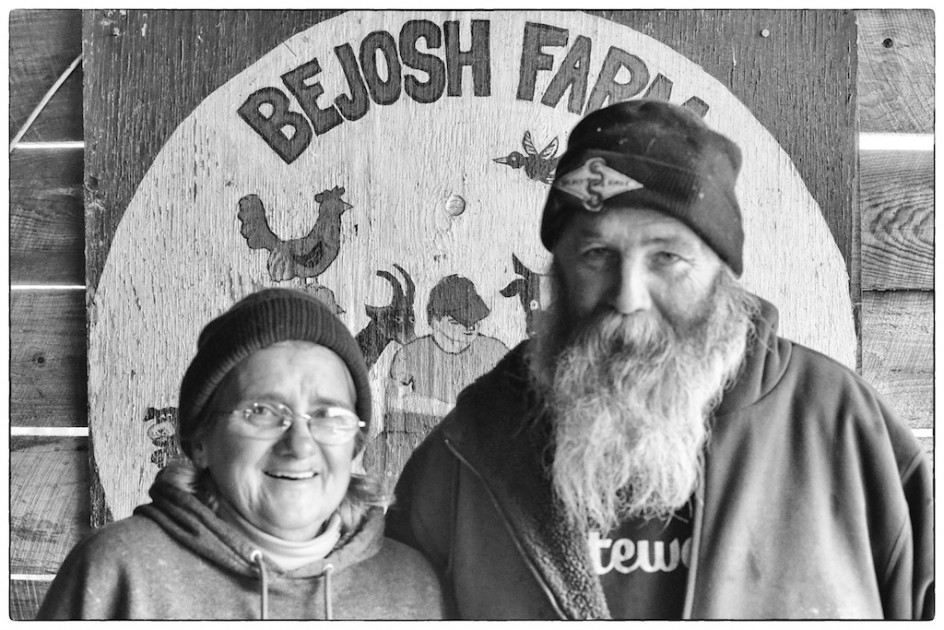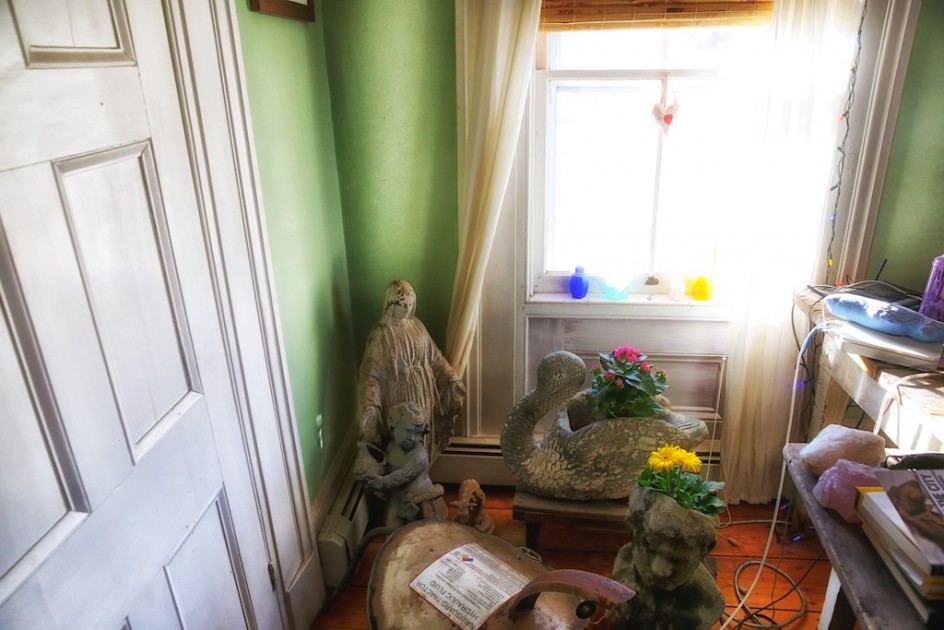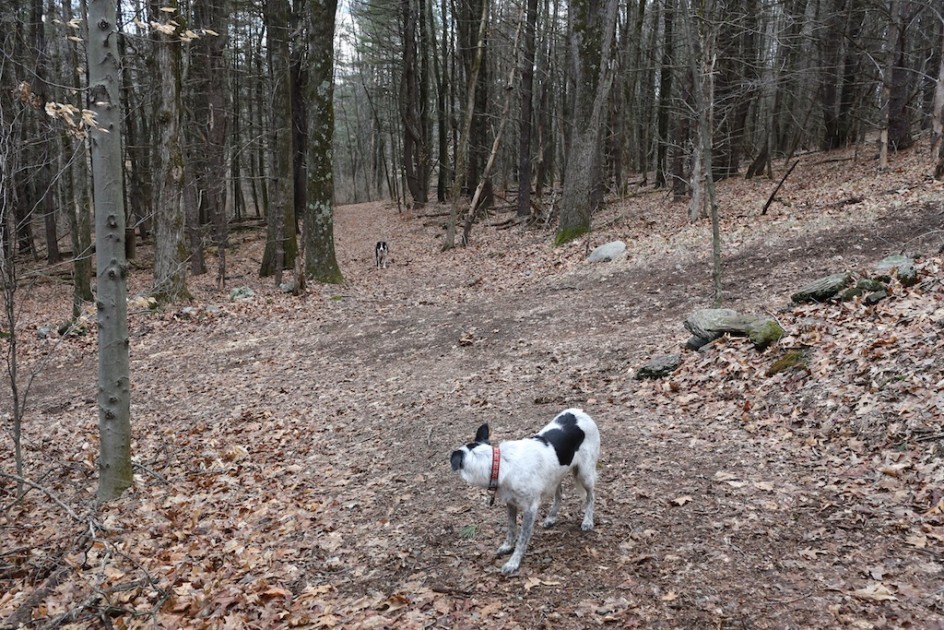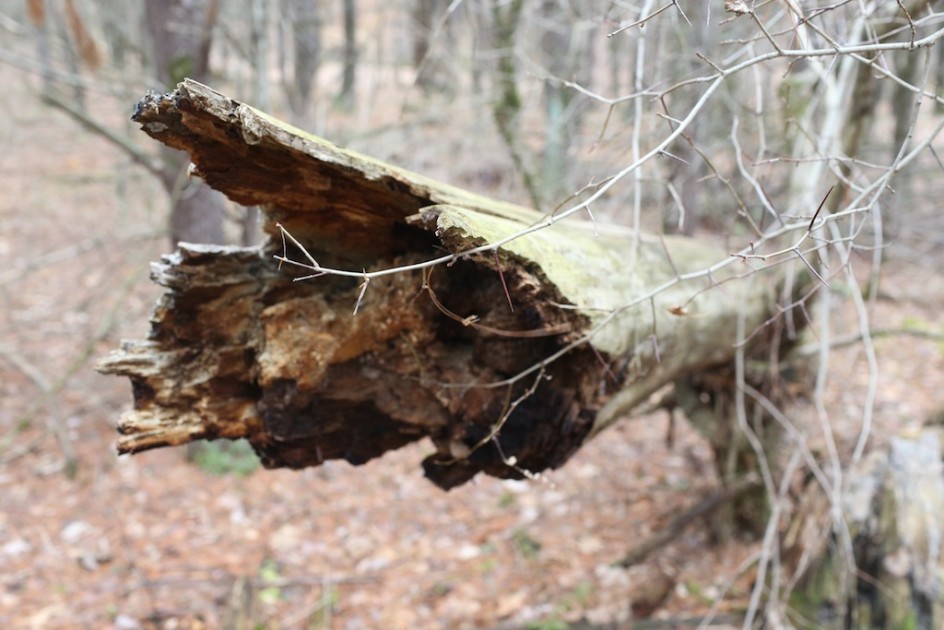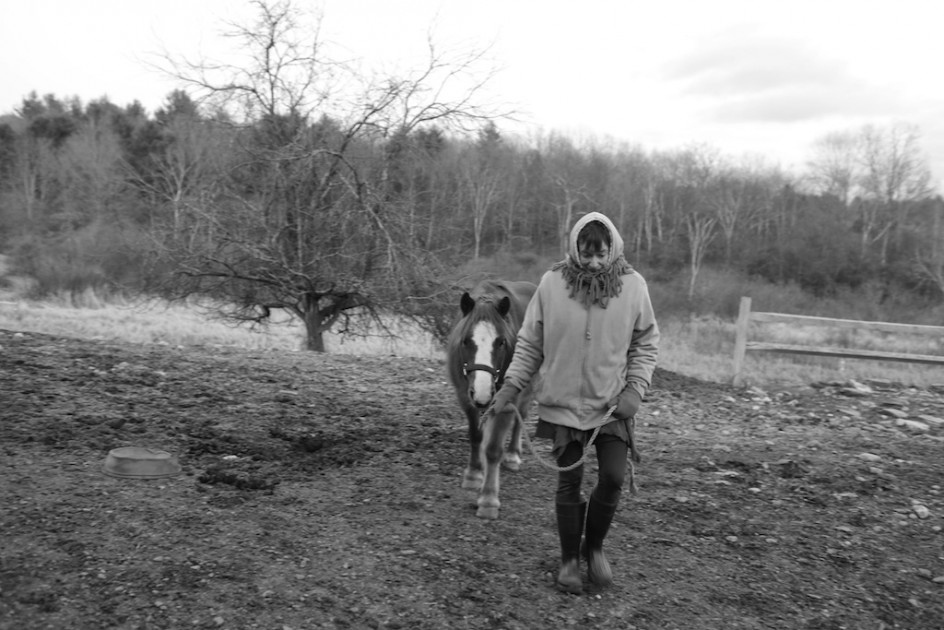
Life on a farm is mostly chores, routine, some vigilance, punctuated every now and then by true fright and challenge. I was sitting in the living room this evening, about to start dinner, when Fate jumped up and ran to the window and began whining. It was unusual, she seemed alarmed – I think I know now when dogs are trying to tell me something – so I got up to look out the window and saw something I have only seen once or twice and never want to see – Maria running as fast as she could to the house, no jacket or gloves in the biting cold, a look of great concern on her face.
I ran to the door, “please come,” she said, “Chloe is down in the pole barn and I need help getting her up.” She ran back out to the pasture ahead of me and I grabbed my jacket and gloves – the wind was brutal this afternoon. “Bring your phone,” Maria yelled, and I knew that meant I might have to call the vet, it was serious.
I had heard the donkeys braying in alarm and sympathy, I thought it might be one of them.
When I got to the pasture, Maria had gotten Chloe on her feet, and the pony was dropping to the ground and rolling, as if in some pain. We got her on her feet and kept her moving. I called the Granville Large Animal Service. They paged Josh, a young and extremely capable vet we have seen at the farm before.
Chloe rolled in the pole barn and had caught her legs in the bottom of a wooden gate, Maria said, and couldn’t get up. I know that rolling is often a sign of colic, the vague but dread affliction that is the number one killer of horses. Colic can be anything that affects the stomach and indigestion, it’s a term used to describe symptoms of abdominal pain, usually caused by problems in the gastrointestinal tract. There are scores of different types of intestinal problems that can cause colic symptoms – rolling on the ground being one – and some are mild and inconsequential and some can kill a horse.
Maria wrote about it on her blog.
We suspected colic but had no way of knowing how serious it might be. Apart from rolling and obvious agitation, Chloe looked good.
Dealing with livestock has its own special challenges. One, they are large and when they get frightened, can be dangerous. Maria and Chloe have a strong connection, Maria visibly calmed Chloe and talked her, she seemed to settle her. The other is that they can’t tell you quickly and clearly what is bothering them, you have to guess.
There is always the need to remain calm. Since animals can’t talk, you don’t really know for sure what it troubling them or how serious it is. And if you panic, they almost surely will. Animals are closely tied emotionally to the people who feed and care for them.
If you stay quiet, they almost always stay calm. We both saw that Chloe looked good, her eyes were clear, her breathing was normal, she was not sweating or showing any signs of panic. We have been through this before with donkeys, sheep, our first pony Rocky, and even chickens.
On a farm, we are all First Responders.
Unlike medical issues with people, there is no 911, no screaming ambulances to show up in minutes, no police to come tearing up the driveway. It takes large animal vets 30 to 45 minutes to arrive, they are usually traveling over wide areas. More than once the vets have been so scattered and busy they can’t come at all. In blizzards, if animals are suffering, they are known to ask if you have a gun and know how to use it.
Ken Norman, our farrier, was 90 miles away. A half hour is a very long time to spend with a sick or frightened animal in the cold. it is a helpless feeling. A real farmer would never have called the vet for Chloe that fast, they would take their time and fix it, one way or the other. As a rule, they don’t pay emergency fees.
Maria handled it beautifully, talking to Chloe, keeping her moving, relaying her observations. We always work well together, there is no argument, no sniping. I think the animals pick up on that. You could see Maria and Chloe’s close connection to one another, Chloe trusted Maria, she was still and agreeable, even when she was being poked and prodded in sensitive places. “Sorry to be rude,” said Josh.
We got Chloe into the barn, closed off the gates, kept walking her and walking her.
She seemed to improve steadily, I actually called the vet to cancel the emergency call – those are expensive – but then Chloe tried to roll again, and Josh and I agreed he should keep on coming. He arrived shortly and we got Chloe into a stall. Josh took her temperature, heartbeat, checked her eyes, listened to her stomach. I was glad we let him come.
I admire the large animal vets, it is mostly the work of the young, it is physical and dirty, and the hours are difficult for normal humans. The phone can ring any time. They have to use their eyes and instincts, there are few good diagnostic tools out on pastures. They wrestle large and uncomfortable animals and are often kicked or bounced off of barn walls.
They have been with us in some intimate and difficult situations, they feel like family. We always catch up on each other’s lives. We might see them tomorrow, maybe not for a year.
Josh was pleased with the new smartphone the practice had given him, he could take Chloe’s heartbeat with it.
Everything was normal, she looked good, he said. if it was colic, he said, it was very mild and was just about gone. She wasn’t rolling any longer, was eager for a carrot, seemed her regular self. If Maria hadn’t heard her kicking, we probably would never have known there was a problem, but it was a good call to bring in the vet. Peace of mind and a good precaution. Call me if there is trouble, he said.
Josh gave her a shot of Banamine for the pain that might be in her legs and to settle her stomach.
We’ve checked her every 30 minutes and we are tired. She looks great. One or both of us will get up and check on her through the night. She looks fine, Josh said he wasn’t worried about it, she might have eaten some wet or decaying marsh grass in the back pasture.
i am always learning the rhythms of the farm, routine that is predictable and numbing, punctuated by life and death dramas that are neither.
We both remembered the morning Simon fell ill, the outcome was not as good. We definitely felt the echoes of that, especially at first. We prepared ourselves for the worst, got the best instead. Chloe is fine, another one of those jarring things that are surprisingly common and routine on a farm. We knew the drill, felt comfortable and confident handling it. The farm is a teacher, life on a farm is not perfect, Life on the farm, but it asks the best of us and makes us wise about life.
Maria is exhausted, me too. Going to bed. It is fine, but it is draining, scary stuff.

